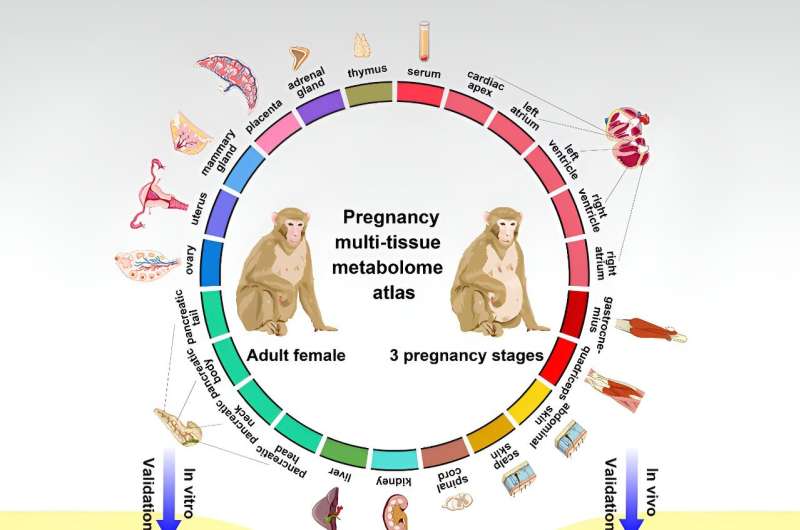February 6, 2024 report
This article has been reviewed according to Science X's editorial process and policies. Editors have highlighted the following attributes while ensuring the content's credibility:
fact-checked
peer-reviewed publication
trusted source
proofread
Mapping changes to metabolic pathways during pregnancy

A large team of ob-gyns, regenerative medicine and fetal development specialists and metabolic researchers in China has tested macaques and mapped many of the changes that happen to metabolic pathways in primates during pregnancy.
In their project, reported in Cell, the group studied metabolic pathway changes in macaques by comparing metabolite samples from organs in non-pregnant females with those in various stages of pregnancy.
Prior research has shown that organs in primates "communicate" with one another using metabolic pathways. Such communications involve sending metabolites—a type of molecular nutrient—from one organ to another. Such a communication system is needed to maintain a balanced overall metabolic system.
In this new study, the research team wondered what, if any, changes occurred in the metabolic system during pregnancy in primates. To find out, they turned to macaques, a primate with a reproduction system similar to humans.
The research team collected macaque metabolite samples from several organs during different stages of pregnancy and compared them with a control group of females that were not pregnant.
The researchers found many differences during the initial stages of pregnancy, one of which was the reduction in communications between the uterus and the heart and some types of muscles. Another was that once formed, the placenta joined the metabolic system by sending metabolites to the ovaries, liver and heart, even as the uterus shifted to sending metabolites to the scalp. The research team also noted that in the latter stages of a pregnancy, the skeletal muscles began exchanging metabolites with the spinal column.
Another part of the research effort involved collecting and studying blood samples from pregnant human women. The researchers found that women experiencing preeclampsia underwent a significant drop in the production of the metabolite corticosterone, which they suggest could help explain associated inflammation. They also found that changes to levels of palmitoylcarnitine, also a metabolite, could be a factor in the development of gestational diabetes.
More information: Dainan Yu et al, A multi-tissue metabolome atlas of primate pregnancy, Cell (2024). DOI: 10.1016/j.cell.2023.11.043
© 2024 Science X Network





















